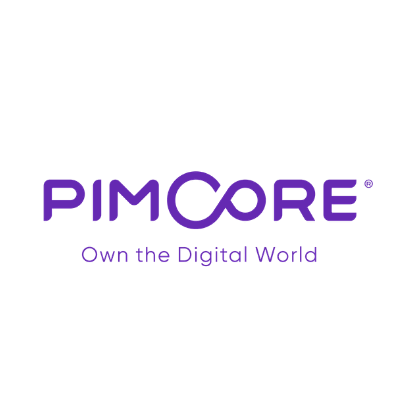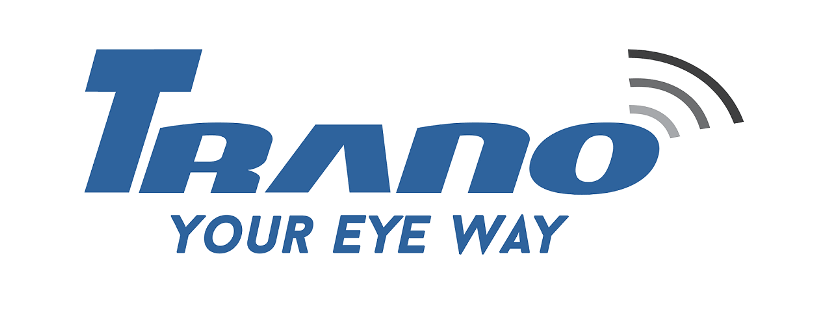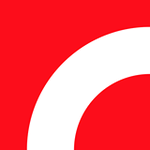Description

Pimcore

Tragging Fixed Assets
Comprehensive Overview: Pimcore vs Tragging Fixed Assets
Pimcore and Tragging Fixed Assets represent distinct solutions within the broader field of business management systems, each catering to different needs and industries. Below is a comprehensive overview of these products:
a) Primary Functions and Target Markets
Pimcore
Primary Functions: Pimcore is an open-source digital platform that provides solutions for managing digital experiences and data. Its primary functions include:
- Product Information Management (PIM): Centralized platform for managing product data and digital assets.
- Digital Asset Management (DAM): Enables businesses to store, organize, and retrieve digital assets like images, videos, and documents.
- Customer Data Platform (CDP): Manages and consolidates customer data from various sources.
- Content Management System (CMS): Offers CMS capabilities for customizing front-end content experiences.
- Digital Commerce: Provides tools for creating eCommerce platforms, integrating PIM and DAM capabilities.
Target Markets:
- Retail and eCommerce: For managing product catalogs and ensuring consistent data across channels.
- Manufacturing and Distribution: To streamline operations and improve data accuracy.
- Media & Publishing: For managing large volumes of media assets.
- Healthcare and Financial Services: To manage sensitive data while ensuring compliance.
Tragging Fixed Assets
Primary Functions: Tragging Fixed Assets focuses on the management and tracking of physical assets. Its core capabilities include:
- Asset Tracking: Uses RFID, barcodes, and IoT to track the location and status of assets.
- Inventory Management: Provides tools for managing asset inventories.
- Asset Auditing: Streamlines audit processes with accurate tracking and reporting.
- Depreciation Management: Calculates and manages the depreciation of assets over time.
Target Markets:
- Logistics and Supply Chain: For tracking assets across locations efficiently.
- Manufacturing: To keep tabs on machinery and equipment status and performance.
- Healthcare: Managing and tracking medical equipment and supplies.
- Government and Public Sector: Management of public assets and infrastructure.
b) Market Share and User Base Comparison
Pimcore: Pimcore is well-regarded in the digital experience management market due to its open-source model, which provides flexibility and customization to a broad user base. It has a strong presence among companies looking for cost-effective solutions in managing digital content and products. Pimcore's market share benefits from its wide range of functionalities bundled into an integrated platform, although it competes with larger, proprietary solutions like Adobe Experience Manager and Sitecore.
Tragging Fixed Assets: Tragging is a more niche player, primarily targeting industries with significant asset management needs. While it may not have the broad recognition of larger enterprise resource planning (ERP) solutions like SAP or Oracle, it appeals to organizations seeking specialized expertise in asset tracking. Its user base is largely industry-specific, focusing on sectors with large volumes of assets to manage.
c) Key Differentiating Factors
Pimcore:
- Flexibility and Integration: As an open-source platform, Pimcore offers significant customization potential, making it adaptable for diverse industry needs. Its integrated approach to managing product data, content, and customer information is a notable differentiator, providing a unified solution for businesses.
- Cost-Effectiveness: Being open-source, it eliminates license fees and allows for tailored development, which can reduce overall costs for businesses.
- Comprehensive Suite: Offers a broad array of functionalities that cater to eCommerce, CMS, and DAM, unlike competitors that might focus on a single aspect.
Tragging Fixed Assets:
- Specialization in Asset Management: Focuses exclusively on asset tracking and management, providing depth and expertise in this area, enhanced by technology like RFID and IoT.
- Technology Integration: Its integration of cutting-edge technologies for real-time tracking sets it apart from many traditional fixed asset management solutions.
- Industry-Specific Solutions: Tailors its offerings to meet specific industry needs, providing more relevant tools and capabilities.
In summary, while Pimcore serves a wide array of industries with a focus on managing digital experiences and data, Tragging Fixed Assets excels in the niche of physical asset management. Their differing focuses shape their user base, market share, and the specific value propositions they offer to businesses.
Contact Info

Year founded :
2009
+43 662 230991
Not Available
Austria
Not Available

Year founded :
Not Available
Not Available
Not Available
Not Available
Not Available
Feature Similarity Breakdown: Pimcore, Tragging Fixed Assets
When comparing Pimcore and Tragging Fixed Assets, it's important to understand that these are tools serving different primary functions. Pimcore is a multi-domain master data management (MDM) and a digital experience platform, whereas Tragging Fixed Assets is a software solution focused on asset tracking and management. Here's a feature similarity breakdown between the two:
a) Core Features in Common
-
Asset Management:
- Both Pimcore and Tragging Fixed Assets offer asset management capabilities. Pimcore manages digital assets like images, videos, documents, and other media files, while Tragging focuses on physical asset tracking.
-
Inventory Management:
- Both platforms can help in the organization and management of inventory. This is more extensive in Tragging as it directly focuses on tracking physical assets.
-
Data Management:
- Data management is a core feature for both. Pimcore excels in managing a variety of data types and integrating that data across business units, while Tragging focuses on data related to asset tracking.
b) User Interface Comparison
-
Pimcore:
- Pimcore’s user interface is designed to be flexible and highly customizable, catering to a wide range of business needs such as digital asset management, content management, and product information management.
- It offers a dashboard-based UI that integrates data, content, and commerce seamlessly.
-
Tragging Fixed Assets:
- Tragging typically features a more straightforward and functional interface tailored to asset tracking. Its design is usually focused on simplicity and ease of use to facilitate the tasks of tagging, tracking, and monitoring physical assets.
c) Unique Features
-
Pimcore:
- Digital Experience Management: Offers tools for creating personalized digital experiences across different channels.
- Content Management System (CMS): In addition to asset and data management, it includes robust CMS capabilities for managing website content.
-
Tragging Fixed Assets:
- RFID Technology Integration: Often includes RFID technology for more efficient asset tracking and management.
- Physical Asset Lifecycle Tracking: Designed to handle the complete lifecycle of physical assets, from acquisition and maintenance to disposal.
Overall, the choice between the two would depend on your specific needs regarding digital data versus physical asset management. If your requirement is strong in digital experience and data management, Pimcore might serve better, while for dedicated physical asset management with tracking abilities, Tragging Fixed Assets would be more appropriate.
Features

Not Available

Not Available
Best Fit Use Cases: Pimcore, Tragging Fixed Assets
Pimcore:
a) For what types of businesses or projects is Pimcore the best choice?
Pimcore is a comprehensive open-source platform designed for managing digital data and assets. It's an ideal choice for:
-
Enterprises with Complex Digital Needs: Companies that need to manage vast amounts of digital content and media assets will benefit from Pimcore’s Digital Asset Management (DAM) and Product Information Management (PIM) capabilities.
-
E-commerce Platforms: Businesses that operate online stores can leverage Pimcore’s features to manage product information, categorize products efficiently, and synchronize updates across multiple channels.
-
Marketing and Content Management: Organizations focusing on digital marketing can utilize Pimcore's Content Management System (CMS) to create, manage, and optimize digital content across different platforms.
-
Multi-channel Retailers: Those engaging in omnichannel marketing and retailing can use Pimcore to ensure consistent and updated product information across various sales channels.
-
Custom Digital Solutions: IT service providers or digital agencies that develop custom solutions for clients often choose Pimcore due to its flexible API and ability to integrate with other systems.
b) In what scenarios would Tragging Fixed Assets be the preferred option?
Tragging Fixed Assets is a specialized solution focusing on asset tracking and management using technologies like RFID. Ideal scenarios for using Tragging include:
-
Large Organizations with Significant Physical Assets: Companies with a large volume of physical assets, such as machinery, vehicles, or equipment, spread across multiple locations.
-
Industries with High Compliance Requirements: Healthcare, manufacturing, or defense sectors where regular asset tracking and auditing are mandatory for compliance and regulatory requirements.
-
Logistics and Supply Chain Management: Businesses that require real-time tracking and management of assets throughout their supply chain, aiming to optimize inventory levels and asset utilization.
-
Facilitate Easier Auditing Processes: Organizations that conduct frequent internal audits of their assets benefit from automated and efficient asset tracking.
d) How do these products cater to different industry verticals or company sizes?
Pimcore:
- Industry Vertical: Pimcore caters to various industries such as retail, manufacturing, financial services, media, and hospitality through its versatility in managing digital data, irrespective of the specific vertical.
- Company Size: It is suitable for both medium-sized businesses and large enterprises, given its scalable architecture and customizable capabilities. Small businesses might find it too robust unless they have significant digital asset management needs.
Tragging Fixed Assets:
- Industry Vertical: Primarily used in industries where tracking physical assets is critical, like logistics, healthcare, manufacturing, or construction. The RFID and IoT capabilities are pertinent across sectors needing precise asset location and status data.
- Company Size: More suited for medium to large enterprises due to the complexity and cost associated with deploying RFID-based systems. Smaller companies might find RFID overkill unless they have a high volume of assets to track frequently.
Both tools serve different purposes and are chosen based on the specific requirements of the business, focusing on digital vs. physical asset management.
Pricing

Pricing Not Available

Pricing Not Available
Metrics History
Metrics History
Comparing undefined across companies
Conclusion & Final Verdict: Pimcore vs Tragging Fixed Assets
When assessing Pimcore and Tragging Fixed Assets for asset management or business needs, it's crucial to weigh the strengths and limitations of each product.
Conclusion and Final Verdict
a) Best Overall Value:
Determining the best overall value between Pimcore and Tragging Fixed Assets largely depends on the specific needs and priorities of the user or organization. However, considering flexibility, scalability, and comprehensive capabilities, Pimcore tends to offer better overall value for organizations seeking a robust and versatile platform for content and asset management. Tragging Fixed Assets is more specialized and may hold the upper hand for businesses focused solely on fixed asset management.
b) Pros and Cons:
Pimcore:
Pros:
- Versatility and Integration: Pimcore is an open-source platform that provides extensive capabilities not only in asset management but also in content management, product information management, as well as e-commerce, making it ideal for organizations looking for an integrated solution.
- Customization: Highly customizable to suit various business needs.
- Scalable: Suitable for both small and large enterprises, allowing for growth and adaptation over time.
Cons:
- Complexity: Its broad range of features can be overwhelming, potentially requiring significant time for setup and user training.
- Cost of Development: While the platform itself is open-source, there might be additional costs associated with custom development and integrations.
Tragging Fixed Assets:
Pros:
- Specialization: Focused specifically on fixed assets tracking, offering features tailored to manage asset life cycles effectively.
- Ease of Use: Typically easier to set up and implement due to its specialized nature.
- Cost-Effective for Asset Management: More cost-effective if tracking fixed assets is the primary requirement.
Cons:
- Limited Scope: Less flexible in terms of content and broader data management capabilities.
- Scalability Constraints: May require integration with other systems as business needs evolve, potentially adding complexity and cost.
c) Recommendations:
-
Organizational Needs Assessment: Users should first conduct a thorough assessment of their organizational needs. If the need spans comprehensive digital asset management, product information management, or includes content management and e-commerce, Pimcore is likely a better fit.
-
Focus on Fixed Assets: For businesses whose primary need is fixed asset tracking and management, and who will benefit from a straightforward, user-friendly system that can be quickly implemented, Tragging Fixed Assets might be the more efficient and economical choice.
-
Consideration of Future Scalability: Organizations should consider future expansion and whether they will need additional capabilities beyond fixed assets tracking. This foresight can influence the decision-making process.
-
Trial and Evaluation: Engage with trial versions or demo sessions of both products to better understand user experiences and relevant feature sets.
In summary, while Pimcore provides robust, all-encompassing functionalities for businesses seeking broad digital management solutions, Tragging Fixed Assets serves those in need of efficient and specialized asset tracking without the need for broader digital asset management capabilities. Each product has its niche, and selecting the right one should be aligned with the organization's current and future requirements.
Add to compare
Add similar companies



